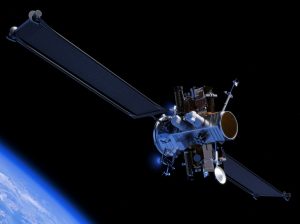The platform of a satellite, often referred to as the satellite bus, forms the foundation upon which all other systems and payloads are built. It serves as the structural and functional backbone, supporting various subsystems necessary for the satellite’s operation in space. Understanding what the platform of a satellite entails is essential for grasping the complexities of satellite design and functionality.

Defining the Platform of a Satellite
The platform of a satellite includes all the basic infrastructure required to keep the satellite operational. This infrastructure encompasses several key systems, such as power supply, thermal control, communication, propulsion, and attitude control. Together, these systems ensure that the satellite can perform its mission effectively, whether it’s for communication, Earth observation, scientific research, or other purposes.
Key Components of a Satellite Platform
- Structural Framework The structural framework is the physical base of the satellite platform. It provides the necessary support to all subsystems and payloads, ensuring the satellite remains intact during the launch and throughout its mission in space.
- Power Supply System The power supply system is crucial for the satellite’s continuous operation. Typically, this system includes solar panels that generate electricity from sunlight and batteries that store energy for use when the satellite is in the Earth’s shadow. The power supply system distributes energy to all other subsystems on the platform.
- Thermal Control System Thermal control is essential for maintaining the satellite’s temperature within operational limits. The space environment presents extreme temperatures, and the thermal control system manages heat distribution using radiators, thermal blankets, and heat pipes to protect sensitive components.
- Communication System The communication system on the satellite platform ensures that data can be transmitted to and from Earth. This system includes antennas and transponders that relay information between the satellite and ground stations, enabling the satellite to receive commands and send back data.
- Propulsion System The propulsion system is responsible for maneuvering the satellite in space. It allows the satellite to adjust its orbit, maintain position, or avoid collisions with other objects in space. Thrusters powered by various propellants are commonly used in this system.
- Attitude Control System The attitude control system is necessary for maintaining the correct orientation of the satellite. This system uses gyroscopes, reaction wheels, and magnetic torquers to control the satellite’s position and ensure that its instruments or antennas are pointed in the desired direction.
Importance of the Satellite Platform
The platform of a satellite is more than just a physical structure; it is the operational core that enables the payload to function effectively. Without a well-designed platform, the payload, which is the mission-specific component of the satellite, would not be able to achieve its objectives. Whether the mission involves imaging, communication, or scientific data collection, the platform’s role is to provide the necessary support and stability for successful operation.
How the Platform Supports Satellite Missions
The satellite platform is tailored to meet the specific needs of the mission. For example, in communication satellites, the platform must support large antennas and ensure continuous power and precise orientation. In Earth observation satellites, the platform may be designed to stabilize high-resolution cameras and ensure they remain focused on the target area. The adaptability of the satellite platform is key to the success of various types of space missions.
The platform of a satellite is the critical infrastructure that ensures the satellite can operate and achieve its mission objectives. By understanding the core components and functions of the satellite platform, one can appreciate the complexity and importance of this foundation in space exploration and satellite technology.
